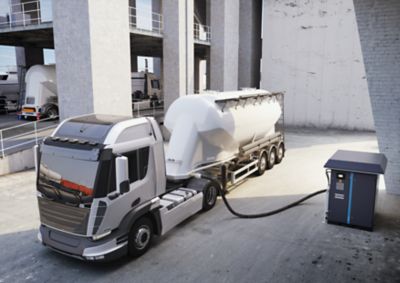Difference Between Screw and Scroll Compressors
Choosing the right air compressor for your facility is essential. This article explores the difference between screw and scroll compressors, comparing their performance and ideal use cases. Whether you're in manufacturing, medical, or lab environments, understanding this difference will help you make an informed decision.
Deciding which type of air compressor to install can be daunting for engineers, technical experts, and project installation executives.
The two fundamental types of air compressors are: Positive displacement and dynamic. The most popular of these are rotary screws, reciprocating air, axial, centrifugal, and scroll compressors. Each air compressor type comes with its own pros and cons list.
When buying air compressors, you should think about several factors. These include your facility needs, location, pressure dew point, and power costs. So, doing your homework correctly would help before installing an air compressor in your facility.
Find your topic below
No, scroll and screw compressors are not the same.
The main difference between screw and scroll compressors lies in how they compress air.
- Scroll compressors use two spiral-shaped scrolls - one fixed and one orbiting around the centre of the stationary scroll. As the scrolls rotate, the orbiting scroll draws air through the inlet, compressing and pushing it towards the centre. Finally, the system releases the compressed air through the outlet
- Screw compressors work with a male and female rotor that rotate in the opposite direction. This movement pulls in air and compresses it as the space between the rotors and their housing decreases. The compressed air is the displaced to the outlet
Understanding the difference between these two compressor types can help you choose the right system for your specific application
PROS
- Ultra-quiet Operation: If you're looking for a compressor that's not just quiet—but ultra-quiet, scroll compressors are your best option. Scroll compressors offer noise levels as low as 48 dBA.
- Ideal for Indoor Settings: The compact design of scroll compressors minimizes and saves floor space, which can be used for other purposes. Several businesses keep their scroll compressors in the closet, so you don’t have to create a dedicated room for your air compressor.
- Energy Efficiency: The technology used within scroll compressors makes them energy efficient. The system shuts down compressor pumps that are not required and automatically adjusts pressure settings. This saves electricity by not producing unwanted air and increases the machine's life.
CONS
- Difficult to Repair: The biggest drawback of the scroll compressor is that it is not easily repairable. The complex design makes it difficult to inspect and clean. One of the inter-fitting scrolls is fixed and can’t be dismantled.
- High Manufacturing Costs: The manufacturing of scroll compressors involves high-end machinery and precise centering assembly technology, which pushes up the manufacturing cost and, consequently, the price.
- Gas Leakage: A certain gap is deliberately kept between the moving and non-moving components to achieve sealing. This leads to gas leakage, which restricts the scroll compressor from achieving a larger compression ratio, contributes to unnecessary power consumption, and adversely impacts the air compressor system in the long run.
- Additional Accessories Needed: Even though scroll compressors manage liquid better compared to other air compressor systems, they still need additional accessories such as crankcase heaters and suction line accumulators for added protection, which adds to the purchasing cost.
PROS
- Supports Extreme Weather Conditions: Rotary screw compressors, support extreme high and low weather conditions. They even function where other chemicals are prohibited to avoid hazardous situations.
- Fewer Components: Unlike other compressors, rotary screw compressors comprise 70% fewer components, making the maintenance procedure easier and reducing maintenance costs.
- Quiet Operation: Despite massive airflow, rotary screw compressors produce less noise, thanks to the noise-dampening technologies embedded in them, which ensures a quiet work environment.
- Less Heat Production: Rotary screw compressors produce less heat, contributing to the system’s longevity. They also utilize less oil, ensuring sufficient oil for the compression chamber to cool the machine, lubricate the moving parts, seal, and dissipate noise.
CONS
- High Initial Cost: One of the most significant disadvantages of rotary screw air compressors is their hefty price. Even though the high cost justifies the efficiency and long lifespan, several companies struggle to arrange the funds, especially during the initial stage.
- Requires Specialized Maintenance: Unlike other air compressors, rotary screw compressor maintenance can’t be done by regular technicians. It requires a higher level of skill and understanding to perform the maintenance and servicing of rotary screw compressors due to their complex systems and components.
Still unsure about the difference between a screw and scroll compressor in practical terms? Here's a breakdown of where each excels:
- Use screw compressors for heavy-duty industrial applications like automotive, brewing, food packaging, aerospace, and construction where continous operation is essential.
- Use scroll compressors in quieter, indoor environments like dental clinics, laboratories, and medical facilities. Scroll compressors are also preferred in residential air-conditioning systems and medical HVAC systems.
Choose the Right Compressor with Atlas Copco
At Atlas Copco, we supply both screw and scroll compressors that will decrease operational costs and increase uptime! Knowing the difference between screw and scroll compressors is the first step. Our experts will help you pick the best model for your production.


